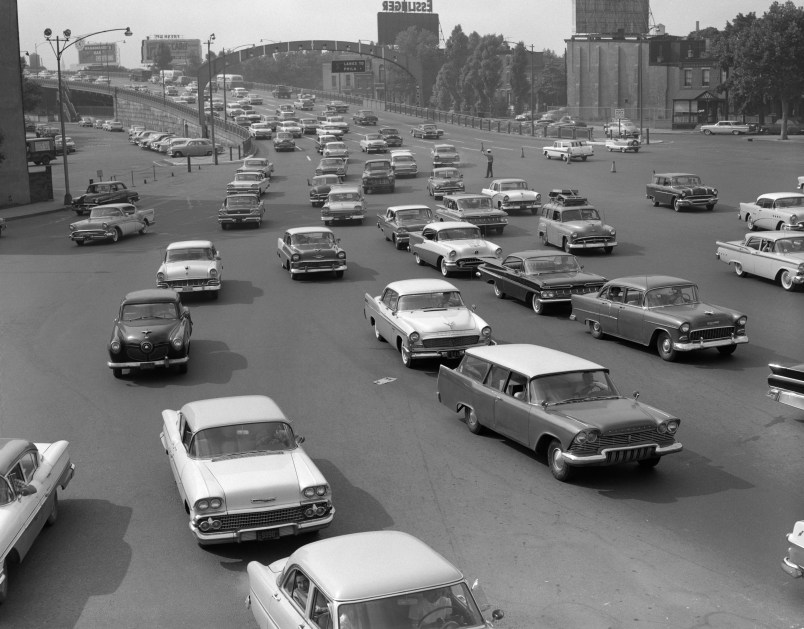A lot of things happened. Here are some of the things.
Paving Over Their Differences
Over the last 18 hours, two new generations of Americans have inadvertently discovered the travesty that is federal transportation funding.
- Baked into congressional funding formulas since the 1980s is a deep imbalance: a whopping 80% of the federal transportation money goes to highways, and the balance of 20% goes to public transit. (If you’re really into this stuff, this Congressional Research Service report offers a lot of the history; see the “Great Compromise” section.)
- This dated old formula from the car-centric last century is in the spotlight because the senators trying to strike a bipartisan infrastructure deal in the Senate are squabbling over which side is deviating from that already-imbalanced formula. And when I say deviating, I mean by a percentage point or two! Not a fundamental reworking of the formula.
- Punchbowl explains nicely:
Democrats say that Republicans are trying to break the 80% highway, 20% public transit split that’s been in place for 39 years. …
Republicans tell us that this complaint is all bunk. They say the funding split over the last five years has been better than 82% highway to just under 18% transit — so highways have gotten more. And over 30 years, it’s been even lower for transit. Republicans said Democrats need to come toward them, or they risk blowing up a deal.
- It’s an enormous inequity that tilts in favor of rural areas over urban ones (it was also for many years a racist dog whistle, with “urban” meaning black and brown).
- With Democrats pushing hard for climate change provisions in their infrastructure bills, highway funding at the expense of mass transit is another example of how fossil fuels are heavily subsidized, even if indirectly (more below).
- I don’t know how the politics of this plays out in the end, but it’s one of those glaring flaws in the system that is hard to reconcile, especially to anyone coming fresh to the conversation:
I don’t even think at my most pessimistic I imagined this process eventually getting to negotiating *down* from a starting position of 80-20% https://t.co/dJ0cTZwMtS
— ‘Weird Alex’ Pareene (@pareene) July 23, 2021
Speaking Of Our Suburban Way Of Life …
From a fundraising email I received from Mark McCloskey, the man of the notorious gun-toting St. Louis couple, who is now running for U.S. Senate from Missouri (none of the emphasis is mine):

The Opposite Of Phasing Out Fossil Fuels
New report shows that the G-20 countries are still subsidizing fossil fuels.
What Precedent?
In closely watched abortion case, Mississippi is now explicitly asking the Supreme Court to overturn Roe v. Wade.
It’s Really Here
The delta variant now accounts for more than 83 percent of the COVID cases in the United States.
- More than 40% of nursing home and long-term health care workers have not yet received vaccinations.
Great Read
“The Guy Who Spent $30 Million Building Trump’s Wall Is Looking for Buyers”
It’s Coming Down Today
Following a final procedural vote, the bust of Nathan Bedford Forrest will be removed from the Tennessee state capitol today and placed in the state museum.
Most Popular This Week At TPM
Bwahahaha!
Tonight Tucker Carlson said he had “proof” the FBI was encouraging crimes on January 6th. You won’t believe what happened next pic.twitter.com/O0oO0mAvRB
— Kat Abu (@abughazalehkat) July 23, 2021
Our First Pandemic Olympics

Sleep! Read! Exercise!
Have a good weekend, everyone!

Do you like Morning Memo? Let us know!







A scene from Logan’s Run - 2021 – Escaping the Pandemic.
That runner is going nowhere. Fast!
Nothing like starting the day watching Tucker make a lying claim and say he has proof coming up, and then have the guest who was presumably in a position to know just calmly say no, he didn’t see any of that.



 I wonder if Tucker made that face of his, the expression of disbelief and disgust someone once described as looking like he was watching a person eat mayonnaise out of the jar with a spoon.
I wonder if Tucker made that face of his, the expression of disbelief and disgust someone once described as looking like he was watching a person eat mayonnaise out of the jar with a spoon.
Yep. Nothing like it.
Very odd MM. Nothing about the Kavanaugh/FBI stuff? That’s a pretty big story to ignore.
Yep, i agree.